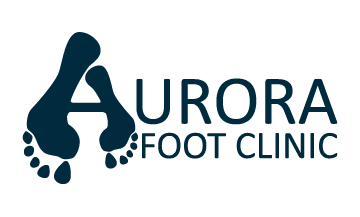Common Foot Conditions
Plantar Fasciitis
Inflammation of the plantar fascia. This large band of tissue (fascia) runs from the heel bone to the ball of the foot.
Most often it causes heel and/or arch pain that is typically worse with the first few steps in the morning. It can also become painful after periods of prolonged standing or sudden weight-bearing after time of inactivity.
Bunions
Abnormal alignment of the big toe. It is also referred to as Hallux Abductovalgus.
The big toe points away from the centre of the body and can be rotated, it may also cause the 2nd toe to sit above or below the 1st. There is often a bump of bone that can be painful on the inside joint of the toe with redness and hammering of the 2nd toe. Abnormal biomechanical function, improper footwear choices or genetics can play a role in their development.
Ingrown Toenails
Nails that curve inwards to the skin. Most commonly, the big toe is affected and seen with redness, swelling and pain with or without infection. If you think your nail is infected, please see your family physician or chiropodist for treatment.
Damage to the nail root, improper footwear, heredity, or improper trimming of the nail can lead to ingrown toenails.
Calluses & Corns
Hard thickened skin caused by areas of high pressure and friction.
They can be quite painful and if left without treatment can lead to scar tissue formation. Common sources for these pressures are from biomechanical abnormalities or footwear, and can often be treated by regular treatment and off-loading with the use of orthotics.
Plantar Warts
Plantar warts are caused by the human papillomavirus. The virus enters through a small break in the top layer of the skin creating painful thickened lesions, typically seen with small black dots. These are not roots, but instead tiny blood vessels that allow it to survive.
Because warts are caused by a virus, you should avoid touching the area and begin treatment as soon as possible in order to prevent spreading. Long standing or mismanaged warts can lead to painful scarring which are especially noticeable on weight-bearing surfaces of the foot.
Heel Pain
Heel pain can be caused by a number of different problems. However, most often we see plantar fasciitis, heel spurs or nerve entrapment.
There are a variety of treatment options available to the patient depending on the cause of the pain.
Fungal Nails
An infection of the nail and underlying nail bed. These infections are also called onychomycosis.
The nail becomes discoloured, thickened and crumbly. If you suspect you have a fungal nail infection, prompt treatment is important to prevent further damage or spreading. There are a variety of treatment options available that your Chiropodist will go over before deciding on a treatment.
Flat Feet
A drop in the inside arch of the foot. It can also be referred to as Pes Planus.
Flat feet can be caused by a number of different conditions. It can be genetic, from biomechanical abnormalities or changes to the bony structure of the foot such as with rheumatoid arthritis. Posterior tibial tendon dysfunction causes flat feet because there is damage to the major arch supporting tendon of the foot.
Diabetes
Maintaining foot health with diabetes is very important. Due to the nature of this condition often times patient’s feet are the first area affected by damage to the nerves and blood vessels.
By participating in routine foot assessments your Chiropodist can monitor any progression, and provide information or treatments to help prevent lower limb complications.
Neuroma
A thickening of nerve tissue often found in the foot between the 3rd and 4th toes. This is referred to as a Morton’s Neuroma.
Patients will usually feel a burning sensation, numbness, pain or the feeling of having a pebble in their shoe. Tight fitting footwear, high heels or abnormal bone structure such as bunions are common predisposing factors for the development of a neuroma.
Tarsal Tunnel Syndrome
Compression of the nerve that runs along the inside of the ankle. It is similar to Carpal Tunnel Syndrome of the wrist.
This produces numbness, tingling or shooting pain along the tract of the nerve to the foot. Contributing factors include fallen arches, flat feet, varicose veins, or any swelling from an injury that puts pressure on the nerve.
Ankle Sprains
An ankle sprain occurs when the ankle is forced outwards or inwards beyond its normal range of motion causing damage to the ligaments.
There is often swelling involved with this injury. Treatment for an ankle sprain requires immediate icing, and rehab.
